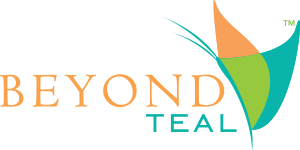
The Golden State Warriors (GSW) are still at it. In the second Western Conference Semifinals playoff game, GSW beat the Utah Jazz 104 - 115. But as discussed in Assists and Collisions Part I: The Golden State Warriors Go Teal, this score is merely an extension of another winning number. Assists. The GSW out-assisted the Jazz 19 – 33.
If assists help you win, wouldn’t it make sense that its opposite – collisions – would take you the other direction? Here at Beyond Teal these two seemingly disparate words work together quite well. So well, in fact, they have a point of convergence. And that is the place where you want to get your organizational culture.
Collisions
The word collision does not have a gentle connotation. It hints towards an uncontrolled force of energy. In physics, when two bodies collide there is an exchange of energy.
Tony Hsieh of Zappos fame defines collisions as the necessity for human interaction in building a community. How does this make any sense?
The Human Force
Hsieh has calculated that he spends 1,000 “collisional hours” in downtown Las Vegas (headquarters for Zappos) each year. These serendipitous encounters, according to Hsieh, are a good thing.
In this capacity, the idea of a collision between two people heightens the moment of opportunity. Communities and culture may be made up of individual behaviors but are created by the collective attention and importance of each human encounter or collision.
And what happens in those collisions? Humans interact with other humans. Emotions, ideas, and opinions may be shared. Exposure to others increases – a fundamental necessity to building respect, empathy, and creativity.
Each collision is an opportunity for sparks to be made. In this capacity, sparks are the gauge of attentiveness to each individual in the interaction. No sparks? No attention to the other person. Lots of sparks? Lots of chemistry!
Pause on that thought for a moment.
It’s not assists that are the antonym for collisions but rather, isolationism. The Silo Effect is a form of isolationism. When organizational groups work in the figurative silo the entire organization suffers from lack of communication, information, and support (assists!) across departments. This systemic pattern plays itself out in organizations, communities, municipalities all the way up to the national level.
Culture, Strategy & Profits
Back to business. What would your organization look like if it created a measurement for tracking or keeping score of collisions and assists? How many more sparks would fly? What teams might those sparks ignite? What changes might it make in the organizational culture? How many more points could your organization score with more assists?
If you remember just one thing, make it this: collisions make assists possible. No collision. No assist. What can you do to increase your staff’s collisional hours?
By the way, the Golden State Warriors are almost always smiling as they play. And so is Hsieh, and those who collide with him.
# # #
Discover how Teal organizations align their culture, strategy and profits for a vibrant, thriving and sustainable organization. Join Bruce Peters for a workshop on Culture, Strategy & Profits including a panel discussion featuring Optimax, a Rochester manufacturing organization utilizing the Teal process to significantly improve all their key performance indicators. Workshop is on June 15th at the Country Club of Rochester. Learn more here.
Is your organization implementing any Teal strategies and practices? Take the Teal Organizational Readiness Assessment and find out!


